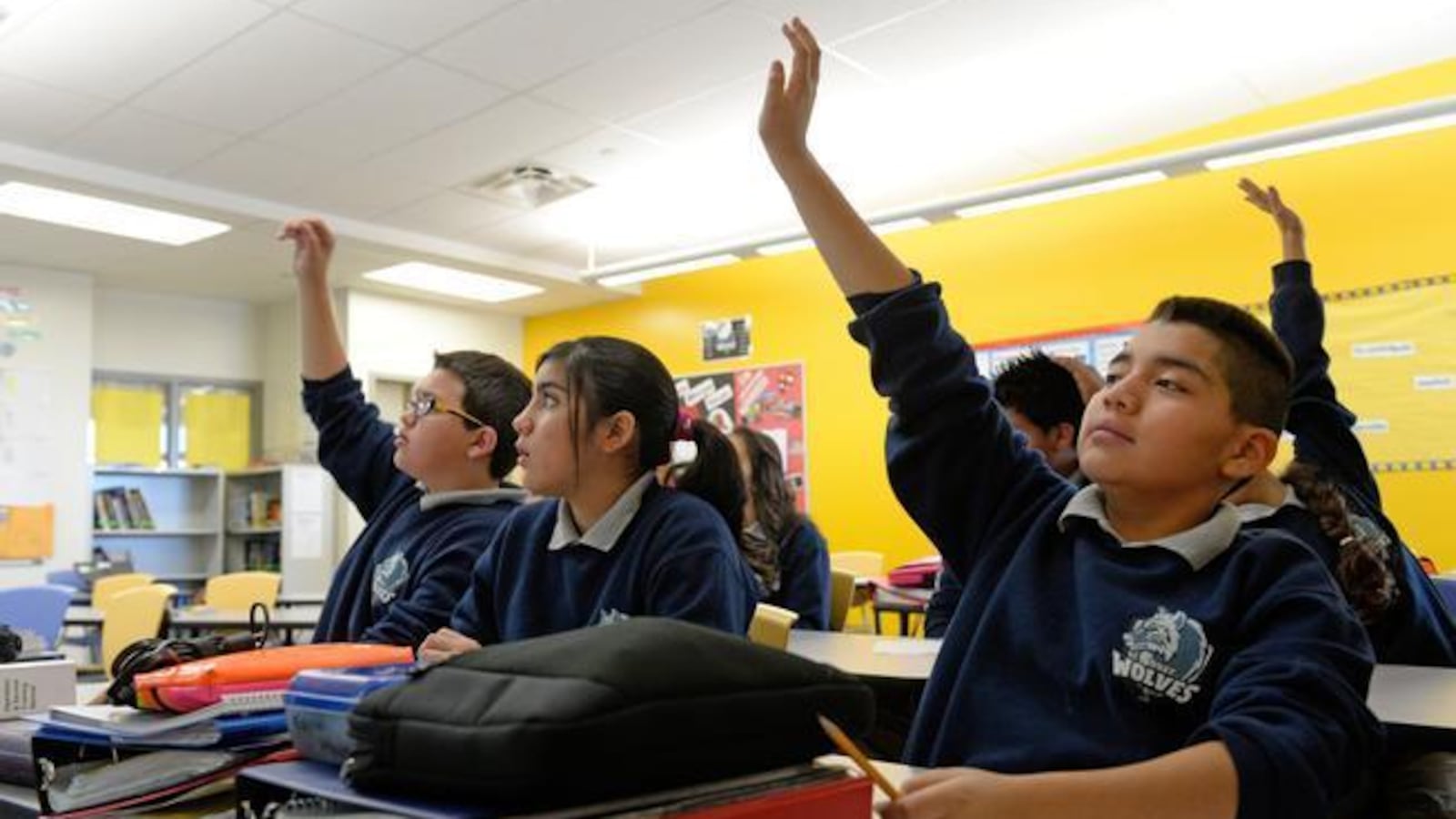Some charter school networks are significantly improving student achievement, but others are harming student learning.
That’s the conclusion of the latest study from CREDO, a Stanford-based research group that has released some of the highest-profile research on charter schools.
In the new analysis, they set out to answer key questions that are hotly debated in the charter school world. What types of charters are most effective? Which networks are most successful? And what students benefit most?
A number of well known “no excuses”-style school networks like KIPP and YES Prep come out looking good, but others — including large virtual school networks and for-profit charters — don’t. And the authors of the report say too many schools aren’t being held accountable for their results.
“Charter school authorizers are charged with acting as the gatekeepers to ensure schools of choice are beneficial to their students,” the authors write. “Some of them seem to be abdicating that responsibility.”
The study is considerable in scope, and examining hundreds of school networks across 26 states between the 2012–13 and 2014–15 school years. (This and other studies from CREDO were funded by the Walton Family Foundation, which supports charter school expansion; Walton also supports Chalkbeat.)
Here’s what the study tells us:
What kinds of charter schools work best?
The latest study distinguishes between three types of charter schools. The first is independent stand-alone schools, which account for 68 percent of the country’s charter schools. The second is schools that are a part of charter-management organizations — networks that include both for-profit and nonprofit providers and account for 22 percent of schools. The third is “vendor-operated” schools, where a charter board outsources operations to a company (usually run for profit), which account for 8 percent of schools.
Students attending a school run by a charter management organization seem to benefit the most. CMOs lead to small but statistically significant annual gains in math and reading, relative to both traditional public schools and other types of charters.
The impact is roughly equivalent to a student moving from the 50th percentile of performance to the 51st percentile. (CREDO converts that impact into “days of learning,” but a number of researchers have questioned the accuracy of this approach, as well as CREDO’s method of comparing students at charter schools to peers who attend nearby district schools.)
“Despite the wide range of CMO quality, larger organizations of charter holders have taken advantage of scale to the benefit of their students,” the study says.
Both independent and vendor-operated schools perform about the same as district schools in math and very slightly better in reading.
The report also breaks down performance by a school’s tax status. Giving credence to concerns among some advocates, charters operated by a nonprofit perform modestly better in both math and reading than for-profit schools.
There is an even starker divide when comparing fully virtual schools against brick-and-mortar charters. Online schools significantly reduce test scores, while in-person charter schools lead to small gains in performance. That is consistent with past studies, including CREDO’s.
“It is time for operators, authorizers and legislatures to step up to their responsibilities to ensure virtual schools, both traditional and charter, are only used when they are the best option for students,” the authors write.
Which specific networks of schools do best?
Individual networks also lead to dramatically different results. Moderate or large networks with positive impacts included Achievement First, BASIS, Democracy Prep, the Denver School of Science and Technology, Great Hearts Academies, Harmony Schools, IDEA, KIPP, National Heritage Academies, Uncommon Schools, and YES Prep.
Conversely, some big groups of schools produced significant drops in achievement. Those include Chicago International Charter Schools, Connections Academy, K12, the Leona Group, and White Hat Management. These school networks often serve as many or more students than the higher-achieving networks.
K12 and Connections Academy have previously disputed CREDO’s approach.
Who benefits the most?
CREDO finds significant variation from state to state, as well as by student population.
For instance, in both CMOs and vendor-operated schools, black and Hispanic students generally see achievement boosts, but white students and students with disabilities see their test scores drop.
Among charter networks, schools in Massachusetts boosted scores the most, while charter networks in Nevada actually hurt students’ scores.
What should oversight of charter schools look like?
The “grand bargain” of charter schools has been autonomy in exchange for accountability. But what that accountability looks like has ranged widely by location and among authorizers overseeing the schools.
Some charter school advocates believe in strict accountability based largely or exclusively on standardized tests. The National Association of Charter School Authorizers, for one, has pushed for charters to be closed based on poor academic progress.
Other choice advocates argue that tests are limited measures of performance and that families are best situated to assess school quality. U.S. Secretary of Education Betsy DeVos has been seen as belonging to this camp. (Notably, though, DeVos met with NACSA last week.)
The authors of the report say their findings show that accountability based on academic performance is needed to ensure students are attending high-quality charter schools.
“Why are charter schools with weak academic track records allowed to replicate? Why are some networks with terrible average growth allowed to continue to operate multiple schools?” the report asks.


